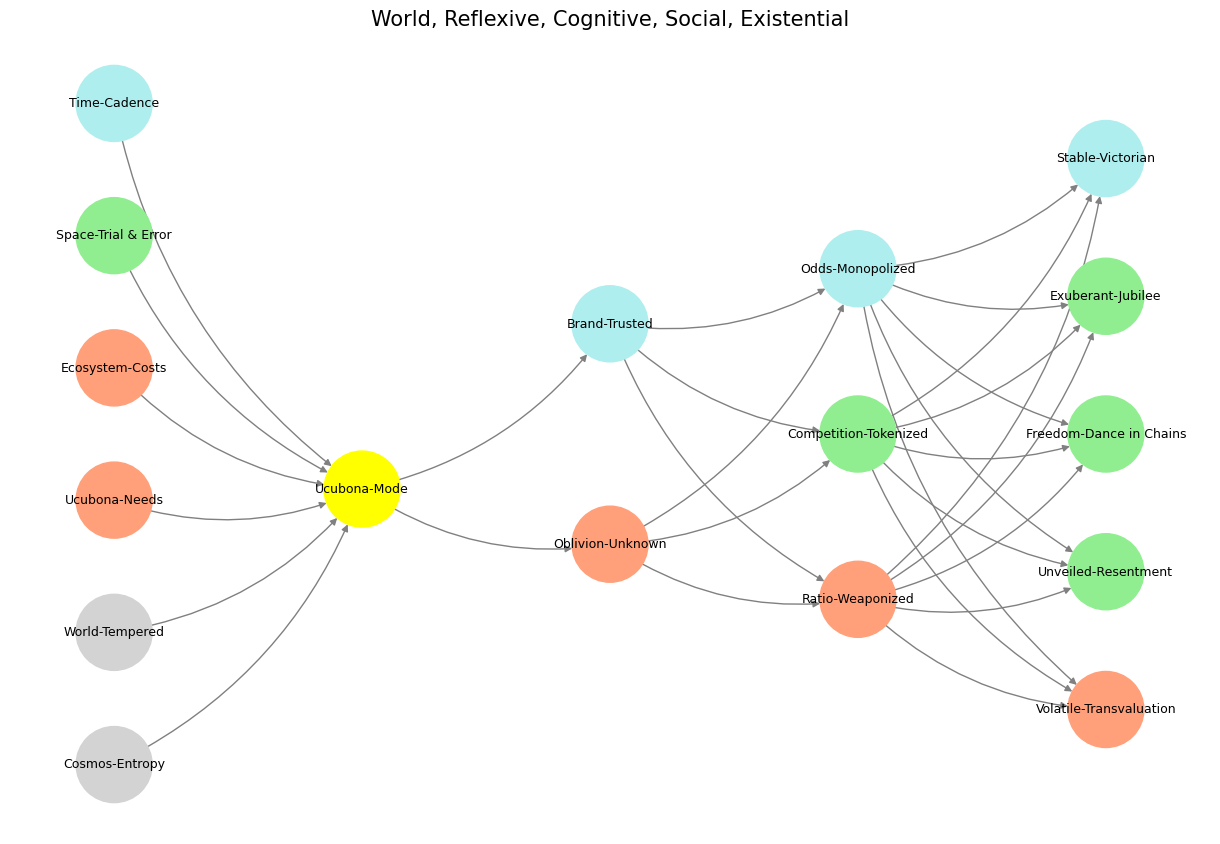Born to Etiquette#
Even in these two lines, there is cadence—an oscillation between stillness and change, between the fixed and the fluid. Dhatemwa kulala suggests repose, a settling into place, a resting state. But Dhayawukana emibala disrupts that equilibrium, introducing motion, a scattering, a divergence into colors. These lines encode the same tension that runs through language, inheritance, and identity: the push and pull between what is given and what transforms, between the name as a resting place and the name as a movement toward something else.
Dhatemwa kulala, Dhayawukana emibala.
– Soga Idiom
A name, like an equilibrium, can be a moment of stillness (kulala), a stable point in generational lineage, as in the Zulu naming tradition. Yet, the very act of naming is also a scattering (Dhayawukana emibala), a branching into new forms, as seen in the child’s transformation of Dhatemwa into KaD. The cadence between these states is not arbitrary—it follows an internal rhythm, a logic that may be Chomskyian in its innate structuring or Hintonian in its adaptive reshaping, but in either case, it carries an inherent pulse.
Looked her up and down, took in the details of her dress
– Somerset
This pulse is not merely linguistic; it is biological, historical, and emotional. The inheritance of names is also the inheritance of wisdom, of ways of being. The transmission of genetic material follows a cadence, a movement from one generation to another, just as knowledge and identity are passed down, sometimes in direct succession, sometimes as scattered colors blending into something new. Even in AI, where Hinton’s models operate, the learning process involves cadence—weights adjusting, activations shifting, networks reorganizing themselves in iterative motion. In both human thought and artificial intelligence, meaning does not rest; it oscillates, it modulates, it seeks new equilibrium.
To be named is to be located within this rhythm. Dhatemwa kulala—the name settles. Dhayawukana emibala—the name disperses. Every naming is both an anchoring and a scattering, both a memory and a possibility. It is not one or the other, but the cadence between them that shapes who we are.

Fig. 29 >Bill Gates 👨🏾 Source Code/>: What a Cadence! In 2025, The Gates Foundation turns 25, Microsoft turns 50, and Bill turns 70 years.#
Show code cell source
import numpy as np
import matplotlib.pyplot as plt
import networkx as nx
# Define the neural network fractal
def define_layers():
return {
'World': ['Cosmos-Entropy', 'World-Tempered', 'Ucubona-Needs', 'Ecosystem-Costs', 'Space-Trial & Error', 'Time-Cadence', ],
'Reflexive': ['Ucubona-Mode'],
'Cognitive': ['Oblivion-Unknown', 'Brand-Trusted'],
'Social': ['Ratio-Weaponized', 'Competition-Tokenized', 'Odds-Monopolized'],
'Existential': ['Volatile-Transvaluation', 'Unveiled-Resentment', 'Freedom-Dance in Chains', 'Exuberant-Jubilee', 'Stable-Victorian']
}
# Assign colors to nodes
def assign_colors():
color_map = {
'yellow': ['Ucubona-Mode'],
'paleturquoise': ['Time-Cadence', 'Brand-Trusted', 'Odds-Monopolized', 'Stable-Victorian'],
'lightgreen': ['Space-Trial & Error', 'Competition-Tokenized', 'Exuberant-Jubilee', 'Freedom-Dance in Chains', 'Unveiled-Resentment'],
'lightsalmon': [
'Ucubona-Needs', 'Ecosystem-Costs', 'Oblivion-Unknown',
'Ratio-Weaponized', 'Volatile-Transvaluation'
],
}
return {node: color for color, nodes in color_map.items() for node in nodes}
# Calculate positions for nodes
def calculate_positions(layer, x_offset):
y_positions = np.linspace(-len(layer) / 2, len(layer) / 2, len(layer))
return [(x_offset, y) for y in y_positions]
# Create and visualize the neural network graph
def visualize_nn():
layers = define_layers()
colors = assign_colors()
G = nx.DiGraph()
pos = {}
node_colors = []
# Add nodes and assign positions
for i, (layer_name, nodes) in enumerate(layers.items()):
positions = calculate_positions(nodes, x_offset=i * 2)
for node, position in zip(nodes, positions):
G.add_node(node, layer=layer_name)
pos[node] = position
node_colors.append(colors.get(node, 'lightgray'))
# Add edges (automated for consecutive layers)
layer_names = list(layers.keys())
for i in range(len(layer_names) - 1):
source_layer, target_layer = layer_names[i], layer_names[i + 1]
for source in layers[source_layer]:
for target in layers[target_layer]:
G.add_edge(source, target)
# Draw the graph
plt.figure(figsize=(12, 8))
nx.draw(
G, pos, with_labels=True, node_color=node_colors, edge_color='gray',
node_size=3000, font_size=9, connectionstyle="arc3,rad=0.2"
)
plt.title("World, Reflexive, Cognitive, Social, Existential", fontsize=15)
plt.show()
# Run the visualization
visualize_nn()


Fig. 30 Glenn Gould and Leonard Bernstein famously disagreed over the tempo and interpretation of Brahms’ First Piano Concerto during a 1962 New York Philharmonic concert, where Bernstein, conducting, publicly distanced himself from Gould’s significantly slower-paced interpretation before the performance began, expressing his disagreement with the unconventional approach while still allowing Gould to perform it as planned; this event is considered one of the most controversial moments in classical music history.#

